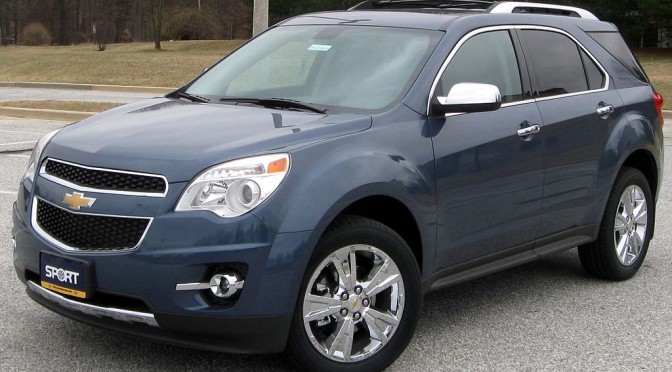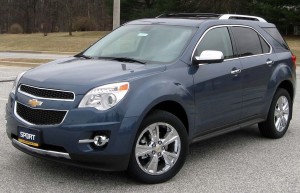 A few days ago, I discussed the safest cars for families with young children, per the latest Status Report from the Insurance Institute of Highway Safety. Cars like the Audi A4 and Subaru Legacy 4WD were computed to have driver death rates of zero over the observed 2008-2011 model year period, which was amazing, and family-friendly station wagons like the Subaru Outback logged driver death rates of 6. This is all well and good, but what does the picture look like for SUVs? That’s what I’m going to look into today. But first, a bit of review is in order.
A few days ago, I discussed the safest cars for families with young children, per the latest Status Report from the Insurance Institute of Highway Safety. Cars like the Audi A4 and Subaru Legacy 4WD were computed to have driver death rates of zero over the observed 2008-2011 model year period, which was amazing, and family-friendly station wagons like the Subaru Outback logged driver death rates of 6. This is all well and good, but what does the picture look like for SUVs? That’s what I’m going to look into today. But first, a bit of review is in order.
How to understand and calculate the 2015 IIHS Driver Death Rates
The IIHS driver death rate studies are analyses the IIHS runs of reported vehicle fatalities per the NHTSA, or National Highway Traffic and Safety Administration. The goal is to figure out how frequently drivers died in fatal single or multiple vehicle collisions throughout the most popular new vehicles in particular model years. The last IIHS report was released in 2011, and nearly four years later, they’ve compiled another collection of data in their February 2015 Status Report, which you can read here.
I highly suggest reading the full review, as it covers more vehicles than those I’m going to focus on here. However, today I’m going to look at some of the SUVs that scored well in the driver death rate studies so small families who are interested in safe SUV choices from the last few years have ideas of vehicles to look at. By last few years, I’m referring to SUVs between the 2008 and 2011 model years.
It’s important to note that the driver death rates are based on actual crash statistics, but also involve extrapolations, or estimates. They aren’t fortune tellers; you can’t tell whether you’re going to live or die as a driver in a given crash based on which vehicle you’re driving, even if you drive a vehicle on the “zero list,” but you can get a decent idea of which drivers were more or less likely to die in recent vehicles over the last few years.
The extrapolations are based on projected driver deaths over a million registered vehicle years. One registered vehicle year represents one vehicle registered for a full year. For example, a driver death rate (DDR) of 10 in vehicle Y, suggests that if 100,000 copies of vehicle Y were driven for 10 years (or 500,000 were driven for 2 years, etc), you could expect 10 drivers of vehicle Y to die in the stated period of time. However, that doesn’t mean that 10 drivers actually did die during the time observed in the study. Here’s how you do that math:
Let’s use an example below of the 2010-2011 Lexus RX 350 2WD. Around 126,252 2WD RX’s were sold in the 2009-2012 period, so you have to divide 1 million (the projected number of vehicle units used by the IIHS in each calculation) by 126,252 (the actual number of units sold) to get a multiplier of 8.
In other words, every fatality across those 126k vehicles would be multiplied by 8 to figure out the initial DDR. However, if you check out the status report or read on further, you’ll see the 2010-2011 Lexus RX 350 2WD has a DDR of 6. What gives?
Well, if the adjusted DDR figure is 6, it suggests there was 1 fatality (8×1=8, which is close to 6). If the adjusted DDR were, say, 24, that would suggest there’d been 3 fatalities based on the 8x multiplier (8×3=24). In this case, the IIHS apparently lowered the initial DDR figure slightly from 8 to 6 based on some adjustments they made (perhaps for driver age and gender, geographic location, etc).
The lower the driver death rate, the better.
With that out of the way, let’s look at some of the best-performing SUVs on the list!
Assumptions behind the safest SUVs for small and average families, per the 2015 IIHS Driver Death Rate Status Report
Unlike in the previous article I wrote on the safest cars per the IIHS report, I’ll define “safe” as SUVs with driver death rates under 9. Why am I choosing 9? Because it’s exactly half as high as the average death rate for SUVs in this study (18). The overall driver death rates calculated in the study were 38 for cars, 23 for minivans, 18 for SUVs, and 29 for pickup trucks, so a driver death rate of 9 reflects an SUV that is twice as safe as the average SUV in this study. Some of the SUVs were even safer.
As I noted in the previous post, the driver death rates are extrapolations based on fatal crashes involving drivers within the model year and calendar year time spans (2009-2012). They don’t take into account passenger deaths, since each vehicle involved in a collision features a driver, but not necessarily a passenger.
This time, I’ll define “small to average” families as those featuring 5 or fewer individuals, such as 2 adults and 3 children, since this is close to the median number of individuals in a household in the United States. I’d define “large” families as families with more than 5 individuals, such as two parent households with 4 children.
You’ll need vehicles with 3 rows to accommodate such families, as 2 row SUVs with 2 seats in the front and 3 seats in the back won’t have enough room. I’m going to focus on vehicles for those families (3 row vehicles) in another post. I’ll also take a look at the safest minivans for families with young children in a future post. Today’s post focuses on 2-row SUVs, as there are several of them worth talking about.
The Safest 2-row SUVs for families with up to 3 young children
With all that in mind, here are the 2-row SUVs with the lowest death rates, starting with those of driver death rates of zero. All of these SUVs can seat up to 5 individuals, and I have included 3 across car seat guides for each SUV I’ve tested to this point.
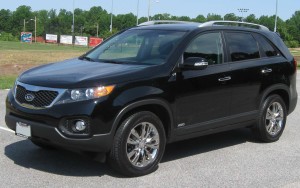 1. The 2011 Kia Sorento, 2WD. It featured a driver death rate that’s as good as it gets–zero–and is the first vehicle Kia has ever made to hit the zero list. To put it simply, no drivers of the Kia Sorento were observed to have died despite the fact that 106,363 of them were tracked between 2009 and 2012. This is incredibly impressive and a testament both to the safe driving of Sorento drivers and to the excellent engineering of the Sorento by Kia.
1. The 2011 Kia Sorento, 2WD. It featured a driver death rate that’s as good as it gets–zero–and is the first vehicle Kia has ever made to hit the zero list. To put it simply, no drivers of the Kia Sorento were observed to have died despite the fact that 106,363 of them were tracked between 2009 and 2012. This is incredibly impressive and a testament both to the safe driving of Sorento drivers and to the excellent engineering of the Sorento by Kia.
It features a number of safety features common to many new vehicles today, including good frontal moderate overlap crash scores, a roof capable of supporting 4.31 times the vehicle’s weight, a good side impact score and side curtain airbags, electronic stability control and roll stability control, and a rollover sensor to trip side airbags in the event of an impending rollover. These are all features I consider vitally important in designing safe cars.
It’s worth noting, however, that the Sorento was not tested for nor designed to pass the the small overlap test, much the same as the majority of well-performing cars, minivans, and SUVs on the list, showing again that test scores aren’t everything when it comes to driver safety. The most important factor has always been good driving. This, naturally, may change when self-driving vehicles become the norm.
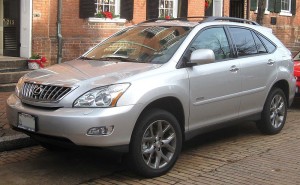 2. The 2010-2011 Lexus RX 350 4WD. The Lexus performed every bit as well as the Kia and also made the zero list, signifying none of the 185,441 RX drivers died during the 2009-2012 time period.
2. The 2010-2011 Lexus RX 350 4WD. The Lexus performed every bit as well as the Kia and also made the zero list, signifying none of the 185,441 RX drivers died during the 2009-2012 time period.
Looking at the RX’s safety features, this again affirms the importance of thorough engineering. It features a good frontal moderate overlap score, side curtain airbags with a rollover sensor, electronic stability control (though not roll stability control), daytime running lights, a good side impact score and a roof 4.27x as strong as the vehicle’s weight, and driver knee airbags. Again, a small overlap score was not present.
This isn’t the first time the RX has performed exceptionally well in the driver death rates. The 2007-2008 RX 350 4WD featured a driver death rate of 25 in the last study, while its hybrid twin, the 2006-2008 RX 400h 4WD featured a DDR of 12. Both of these RX’s were a previous generation with different structural components.
It’s also important to note that the 2WD version of the 2010-2011 RX 350 scored a very impressive DDR of 6. It’s unclear why the 2WD DDR was higher; all we can glean from the data is that all 6 projected fatalities would be due to multiple vehicle collisions, which indicates that the actual fatality recorded was due to such a collision.
Remember that the numbers are extrapolations to a million registered vehicle years, and 126,252 2WD RX’s were sold in this time period, so dividing 1 million by 126,252 results in a multiplier of 8. In other words, every fatality across those 126k vehicles would be multiplied by 8 to figure out the initial DDR. The adjusted DDR figure is 6, which suggests there was 1 fatality and the IIHS lowered the initial DDR figure slightly from 8 to 6 based on some adjustments they made (perhaps for driver age and gender, geographic location, etc).
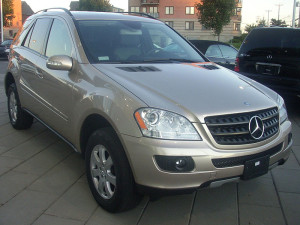 3. The 2008-2011 Mercedes-Benz M-Class 4WD. The M-Class has always been a strong performer in the driver death rate studies, and has achieved its best score yet with a DDR of 3. Around 235,380 units (including the ML320, ML350, and ML500) were tracked, which suggests only 1 driver actually died in the time period. Interestingly, this generation of the M-Class was consistent from 2006-2011 in terms of structural components, featuring side curtain airbags with a rollover sensor, ESC, and good front moderate overlap and side impact scores. It was not tested for roof strength or small overlap performance. Being a Mercedes, however, we’ll assume it was built with a strong roof.
3. The 2008-2011 Mercedes-Benz M-Class 4WD. The M-Class has always been a strong performer in the driver death rate studies, and has achieved its best score yet with a DDR of 3. Around 235,380 units (including the ML320, ML350, and ML500) were tracked, which suggests only 1 driver actually died in the time period. Interestingly, this generation of the M-Class was consistent from 2006-2011 in terms of structural components, featuring side curtain airbags with a rollover sensor, ESC, and good front moderate overlap and side impact scores. It was not tested for roof strength or small overlap performance. Being a Mercedes, however, we’ll assume it was built with a strong roof.
However, despite the fact that the vehicle was structurally identical to the 2006-2008 iteration, during the 2006-2008 period, it achieved a DDR of 14 per the previous IIHS study, all of which were due to multi-vehicle collisions.
 4. The 2010-2011 Chevrolet Equinox 2WD / 4WD. The Chevy Equinox joins the very safe list for the first time with an impressive DDR of 5 in both the 2WD and the 4WD versions. The 2WD version tracked 302,463 copies and had a projected multi-vehicle collision driver death rate of 3 and a single collision driver death rate of 2, while the 4WD version tracked 151,440 and all 5 projected deaths would occur in multi-vehicle collisions. It is likely that only 1 fatality occurred in the 4WD Equinox during the observed time period and that 2 died in the 2WD Equinox, which had twice the exposure (vehicles driven) during the 2009-2012 time period.
4. The 2010-2011 Chevrolet Equinox 2WD / 4WD. The Chevy Equinox joins the very safe list for the first time with an impressive DDR of 5 in both the 2WD and the 4WD versions. The 2WD version tracked 302,463 copies and had a projected multi-vehicle collision driver death rate of 3 and a single collision driver death rate of 2, while the 4WD version tracked 151,440 and all 5 projected deaths would occur in multi-vehicle collisions. It is likely that only 1 fatality occurred in the 4WD Equinox during the observed time period and that 2 died in the 2WD Equinox, which had twice the exposure (vehicles driven) during the 2009-2012 time period.
Again, a good frontal moderate overlap and side impact score with side curtain airbags and a rollover sensor, a roof 4.17x strong, ESC and roll stability control, and daytime running lights were present. Once again, a small overlap score was not present in this generation.
Something I found particularly interesting was that the 2WD twin of the Equinox, the GMC Terrain, fared much worse with a DDR of 38 (29 multi and 6 single), despite being structurally identical to the Equinox. I can only surmise that either Terrain drivers tended to be much worse or simply much more unlucky. Alternatively, an unrecalled but severely dangerous mechanical failure could also be present in the twin, although I see this as the least likely scenario.
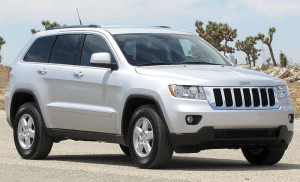 5. The 2011 Jeep Grand Cherokee 4WD. The Jeep Grand Cherokee joins the top list with an impressive projected DDR of 7 across the 108,237 drivers tracked during the time period. All 7 fatalities were projected to be multi-vehicle collisions, suggesting that only 1 actual multi-vehicle fatality occurred across the drivers tracked.
5. The 2011 Jeep Grand Cherokee 4WD. The Jeep Grand Cherokee joins the top list with an impressive projected DDR of 7 across the 108,237 drivers tracked during the time period. All 7 fatalities were projected to be multi-vehicle collisions, suggesting that only 1 actual multi-vehicle fatality occurred across the drivers tracked.
Like the other vehicles on the list, an impressive array of safety features are present in the current generation Grand Cherokee, including a good frontal moderate overlap and side impact score with side curtain airbags and a rollover sensor, a roof 4.63x strong, ESC and roll stability control were present.
Once again, a small overlap score was not present in this generation. However, the 2013 refresh of the JGC, which featured seat belt and airbags modification to improve small frontal overlap protection received a marginal score, suggesting the 2011 JGC would have received a marginal or poor score as well. Daytime running lights were also not present in the 2011 JGC.
This is the best showing of the JGC yet. The previous generation, however, also performed well in the last DDR study, achieving a DDR of 11, with all 11 projected collisions being due to single vehicle collisions and 5 of those being due to rollovers.
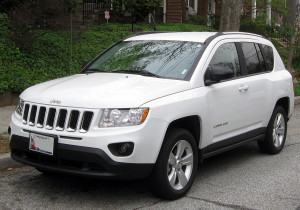 6. The 2008-2011 Jeep Compass 2WD. Finally, the surprise of the day is the Jeep Compass 2WD, which is the only small SUV to make the list of 2-row SUVs with fewer than 9 projected fatalities. It features a DDR of 7 with an exposure of 114,776 copies, suggesting 1 driver died during the observed time period.
6. The 2008-2011 Jeep Compass 2WD. Finally, the surprise of the day is the Jeep Compass 2WD, which is the only small SUV to make the list of 2-row SUVs with fewer than 9 projected fatalities. It features a DDR of 7 with an exposure of 114,776 copies, suggesting 1 driver died during the observed time period.
Like the other vehicles on the list, a number of safety features are present in the newly introduced Compass, including a good frontal moderate overlap and side impact score with side curtain airbags and a rollover sensor, a roof 4.25x strong, ESC and roll stability control were present, as were daytime running lights.
Something disconcerting about the Compass, however, is that side front torso airbags were not standard during this time period, which placed drivers at additional risks of rib fractures and other internal injuries. It’s the only SUV on my list here that did not feature those airbags standard.
Another disconcerting factor about the Compass is that it received a poor small overlap score, although it’s likely that most of the SUVs on this list would have received a poor or marginal score as well had they been tested, since most manufacturers weren’t designing their SUVs to pass this test yet.
Yet another oddity about the 2WD Compass is that its structural twin, the 2WD Jeep Patriot, had the worst DDR of its category, small SUVs, with a projected score of 57 based on 248,487 drivers. 44 of those collisions were projected to be multi-vehicle in nature, while 9 were projected to be single vehicle collisions and 3 of those projected to be due to rollovers.
I have no idea why the DDR was so high here; as with the Equinox/Terrain difference I outlined above, I can only surmise that either 2WD Patriot drivers tended to be much worse or simply much more unlucky. Alternatively, an unrecalled but severely dangerous mechanical failure could also be present in the twin, although I see this as the least likely scenario.
The 4WD Patriot, on the other hand, had a DDR much closer to that of the 2WD Compass at 11 based on 200,988 drivers, with 4 of those due to multi-vehicle collisions and 7 due to single collisions and 4 of those being rollovers.
It’s worth noting that this isn’t the first time a small SUV has performed this well in the DDR studies; the 2007-2008 Honda CR-V 4WD also achieved a 7 with the last study, while its 2WD counterpart received a 22. This time, however, the 2008-2011 CR-V 4WD received a 17 while the 2WD received a 19.
What about 2-row SUVs that didn’t make the top list?
The fact that a number of other 2-row SUVs weren’t at the top list doesn’t necessarily mean they aren’t safe; there’s still a lot of chance that goes into these numbers, and of course, driver differences also make huge differences.
I do find it interesting, however, that the 2008-2011 Ford Edge 4WD, a vehicle that made the zero list in the last DDR study as the 2008 Ford Edge 4WD, which is the same generation as the 2008-2011 Edge 4WD, had a much higher DDR of 41 this time. The 2WD twin, which had had a DDR of 25 in the previous study, had an improved DDR of 14.
Does this mean that Edge 4WD drivers suddenly became reckless, or were suddenly hit by a terrible spate of bad luck?Alternatively, was an unrecalled but severely dangerous mechanical failure present in later years of the Edge 4WD?
I have no idea. It was a big jump in DDR, and I need to look further into that. It does make me recommend, however, that you check previous DDRs if possible before ruling in (or out) particular vehicles. Vehicles that tend to be consistent from one DDR to the next (e.g., the CR-V I noted above, or the M-Class or RX) are likely to be safer bets than those that fly wildly up and down from one generation to the next.
That was a lot of information to cover, and I hope you found it as interesting to read as I did to research and write. Next we’ll take a look at which SUVs and minivans are the best choices for large families, per the IIHS driver death rates. Stay tuned for details!
—
If you find the information on car safety, recommended car seats, and car seat reviews on this car seat blog helpful, you can shop through this Amazon link for any purchases, car seat-related or not. Canadians can shop through this link for Canadian purchases.

